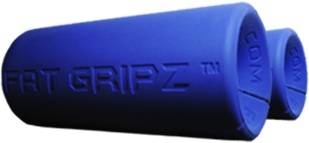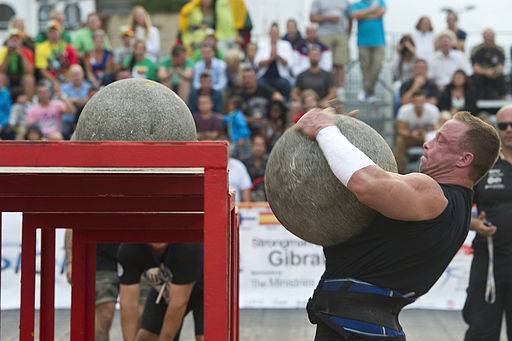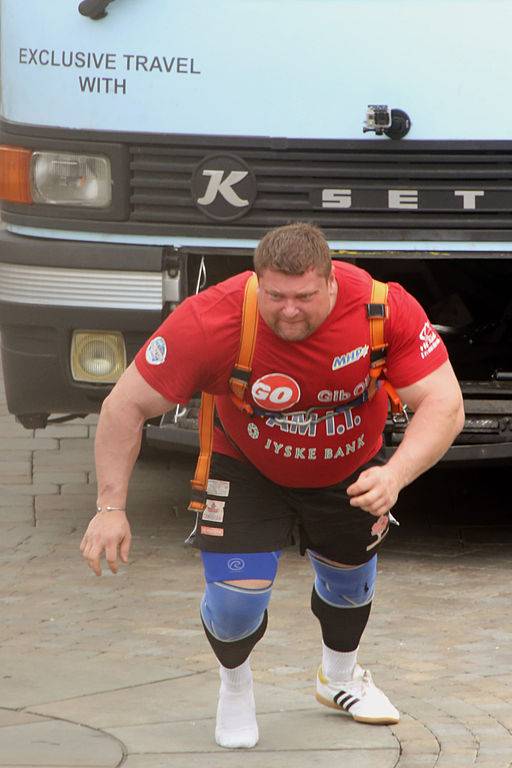When people ask me what strongman is, my reply tends to vary depending on who I’m talking to. It’s a brilliantly effective aspect of strength training, but my mum isn’t going to understand that.
When people ask me what strongman is, my reply tends to vary depending on who I’m talking to. It’s a brilliantly effective aspect of strength training, but my mum isn’t going to understand that.
So to her, I explain (present tense, as I’m sure she’ll ask yet again) that it’s what she sees the big guys do on telly. “You know, pulling trucks, Atlas stones, deadlifting cars.” And before you say anything, it’s okay, I’ve already spent the past few years explaining to her what deadlifts are.
Simplifying strongman like this has got me thinking, though. It’s useful to be able to simplify what strongman training is in terms that are relevant to the person on the receiving end of the information. In this case, that’s you.
So I’m going to assume you are a gym-goer, and I’ll break the events down in terms of things that you can do in your gym.
Perhaps the best way to separate strongman training out is to break it down into categories of movement. This type of categorization also helps when working out how to program and practice each event.
Within each category, I will give you options for training these events in a standard gym setting.
These are not ideal – nothing beats the real deal – but if you want to train either for strongman or in a strongman manner with limited resources, these options will give you some ideas.
Strongman Event Type #1: Squatting
Typical strongman variations: Fat bar squats, squats with increasing load, squats at set weight for reps
Gym training ideas: In training, mix it up between back squats, front squats, and Zercher squats. They all have their place in terms of transfer over to strongman. However, transfer of strength aside, you’ll only ever perform back squats in a strongman event.
Hit heavy triples and doubles regularly to get used to shifting heavy loads. In terms of the rep work, twenty-rep squats would be a useful place to start. Hit these once a week, upping the weight each week. Squat deep, squat heavy, and squat often.
Strongman Event Type #2: Deadlifting
Typical strongman variations: 15” deadlifts, car deadlift for reps, deadlift for max weight
Gym training ideas: Strongmen pick stuff up off the floor in a variety of ways. Your training needs to match that. Use fat grips on a barbell to train grip strength and get used to picking up something of a larger circumference than a standard barbell.
Deadlifting using a trap bar can be a useful way of training for events where the deadlift handles are either side of you, as they are on some car deadlifts. If you don’t have a trap bar, use a pair of heavy dumbbells for reps.
To train for 15” deadlifts, you could perform partial deadlifts from the pins, or if you don’t have a power rack, you could pull off a raised platform made from stacked weight plates. This is going to be beneficial in terms of both strength and recovery, too, as opposed to pulling from the floor all the time.
Strongman Event Type #3: Clean and Press
Typical strongman variations: Log for max weight, axle for reps, circus dumbbell for reps

Gym training ideas: The shape and size of the strongman equipment used for this event is the key factor. Fat Gripz, or similar, can come in useful to approximate this. Wrap one of these grips around a dumbbell to simulate a circus dumbbell. Or wrap a pair around a barbell to simulate the grip of a thick axle bar.
The other disadvantage of an axle bar is that it’s a solid lump of metal, so there are no rotating sleeves. (But then again, most of the barbells I’ve found in standard gyms barely spin anyway.) It’s worth getting used to the continental clean too.
Perform these for maximum reps in sixty to 75 seconds. It’s a little harder to train for the log within the gym. However, heavy power clean and presses will help.
Make sure to press or push press rather than jerk the weight overhead, as you’re going to need the raw shoulder strength to . (Ever tried jerking a log? Not as easy at you may think when you’re shouting at the big lads on the telly to use their legs.)
Strongman Event Type #4: Loading
Typical strongman variations: Stones loading, sandbag loading, keg loading (for time)

Gym training ideas: Sandbags and kegs are a little easier to get hold of than Atlas stones. (Please, tell me you saw what I did there?) Many gyms these days have Powerbags or similar items, which are as close as you are going to get to a sandbag within a gym.
If your gym does have these, avoid using the handles – treat them like an actual sandbag. With a keg or sandbag event you are likely to have to carry the objects a short distance before you load them.
For training the carrying aspect in a limited space, even holding your sandbags in the manner you would carry and walk with them is going to be of benefit.
For the loading aspect, you’re unlikely to have a platform to load onto. But if you have something to load over (even a barbell set high on a squat rack), that’s a decent alternative.
Strongman Event Type #5: Carrying
Typical strongman variations: Yoke carry, farmer’s walk, duck walk (for time or distance)
Gym training ideas: For me, heavy carries are the epitome of strongman. The definition of moving heavy weight over long distances quickly. Get outside if you can.
A barbell on your back will simulate a yoke, and a pair of heavy dumbbells or kettlebells in your hands will be as good as you can get for farmer’s walks.
Inside the gym, if space is limited, so are your options. You need to be able to move with these things. Failing that, get those heavy weights on your back or in your hands and hold them there.
Don’t go to failure with this – it’s dangerous and ineffective. Instead, try and simulate the time you’ll be carrying the weights in competition. This might be just a few seconds in an event for time, or for sixty seconds but with breaks in an event for distance.
Strongman Event Type #6: Flipping or Pulling
Three strongman variations: Tire flip for reps, Fingal’s Fingers, truck pull for time

Gym training ideas: It’s perhaps a little unfair to group flipping and pulling into one. Having said that, they both involve shifting heavy weight over distance without carrying, so they are related. Each is also much more metabolically taxing than you might expect if you’ve not done them before.
Prowlers and sleds are becoming more commonplace in gyms and are excellent tools for general strength, conditioning, and training for these types of events.
Attach a rope to a sled or prowler and pull it arm over arm. Or attach a weight belt to the rope and pull it behind you like you would with a truck. For the flips, a few sets of six to eight fast power clean and jerks with sixty-second rest periods in between are a useful gym based training protocol.
The clean and jerk simulates the up-and-under of the tire flip, and also trains explosive hip power. The rep and rest scheme helps to get you ready for the muscular and metabolic effects.
This is not an exhaustive list of types of strongman event, or complete list of ways you can train for them. I strongly recommend that you take every opportunity to play with real strongman gear when you can. However, these are good and viable gym-based alternatives for the main types of strongman events.
If this has captured your interest, and you would like to add even more structure to your strongman training, check out my free strongman programming. The first two workouts each week are perfect for those who have little or no access to strongman equipment, as they are entirely gym based. For the event day each week, simply switch the actual events for the suggestions above. The event categories even match up to the ones in this article. Don’t say I’m not good to you!
Check out these strongman programs:
- Strongman Cycle 1
- Strongman Cycle 2
- Strongman Cycle 3
- Strongman Cycle 4
- Strongman Cycle 5
- Strongman Cycle 6
- Strongman Cycle 7
Strongman photos by InfoGibraltar (Flickr: STRONGMEN 201312) [CC-BY-2.0], via Wikimedia Commons.






